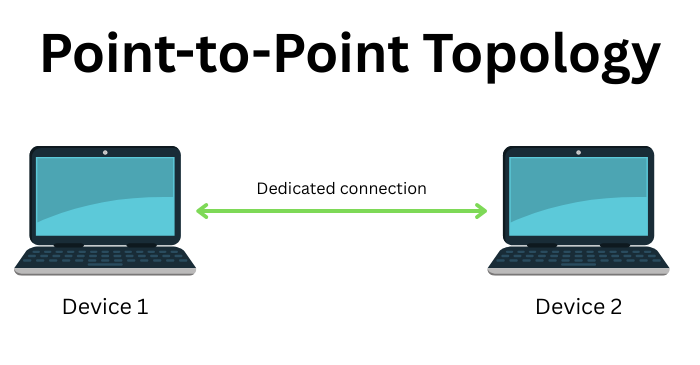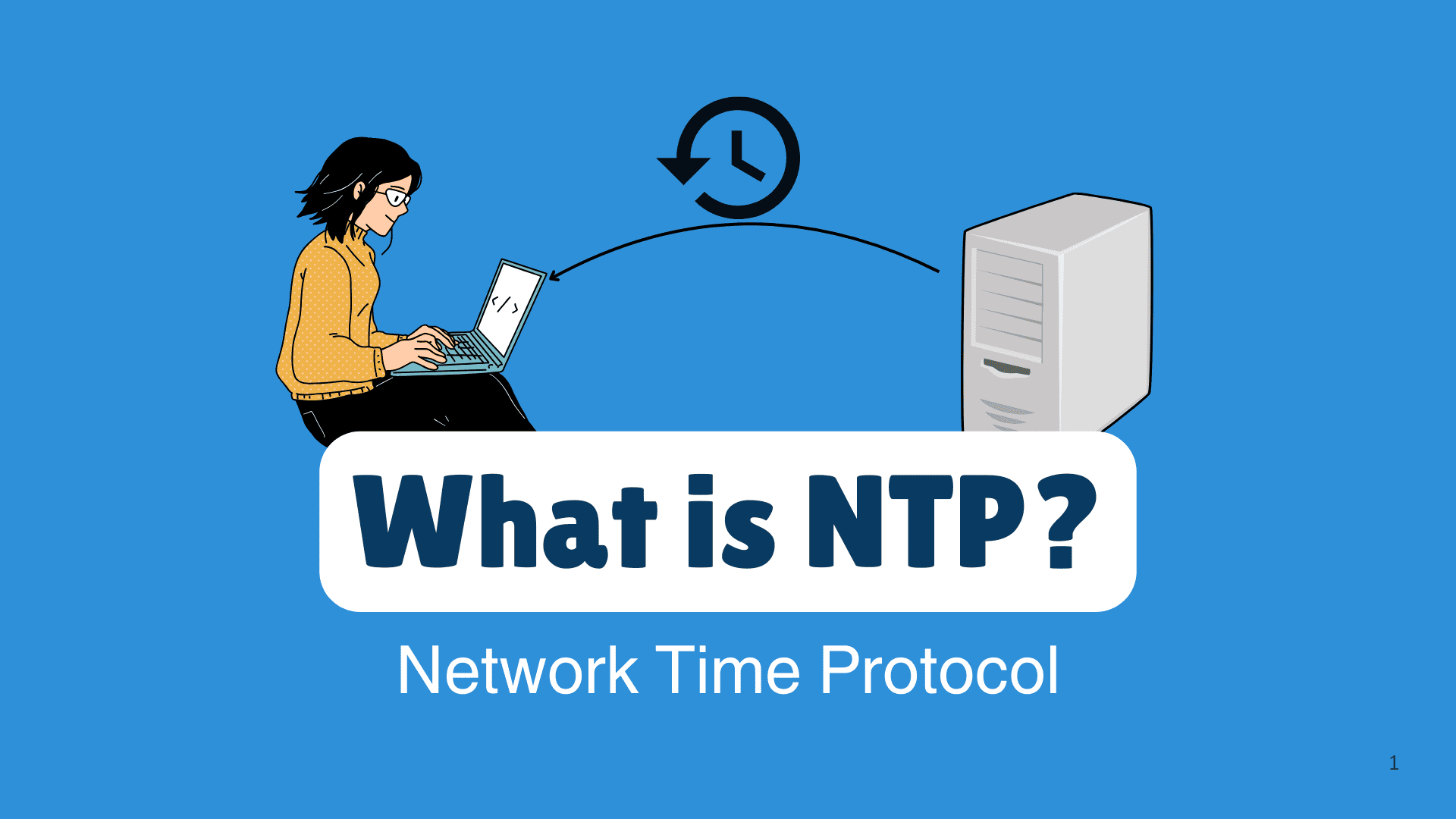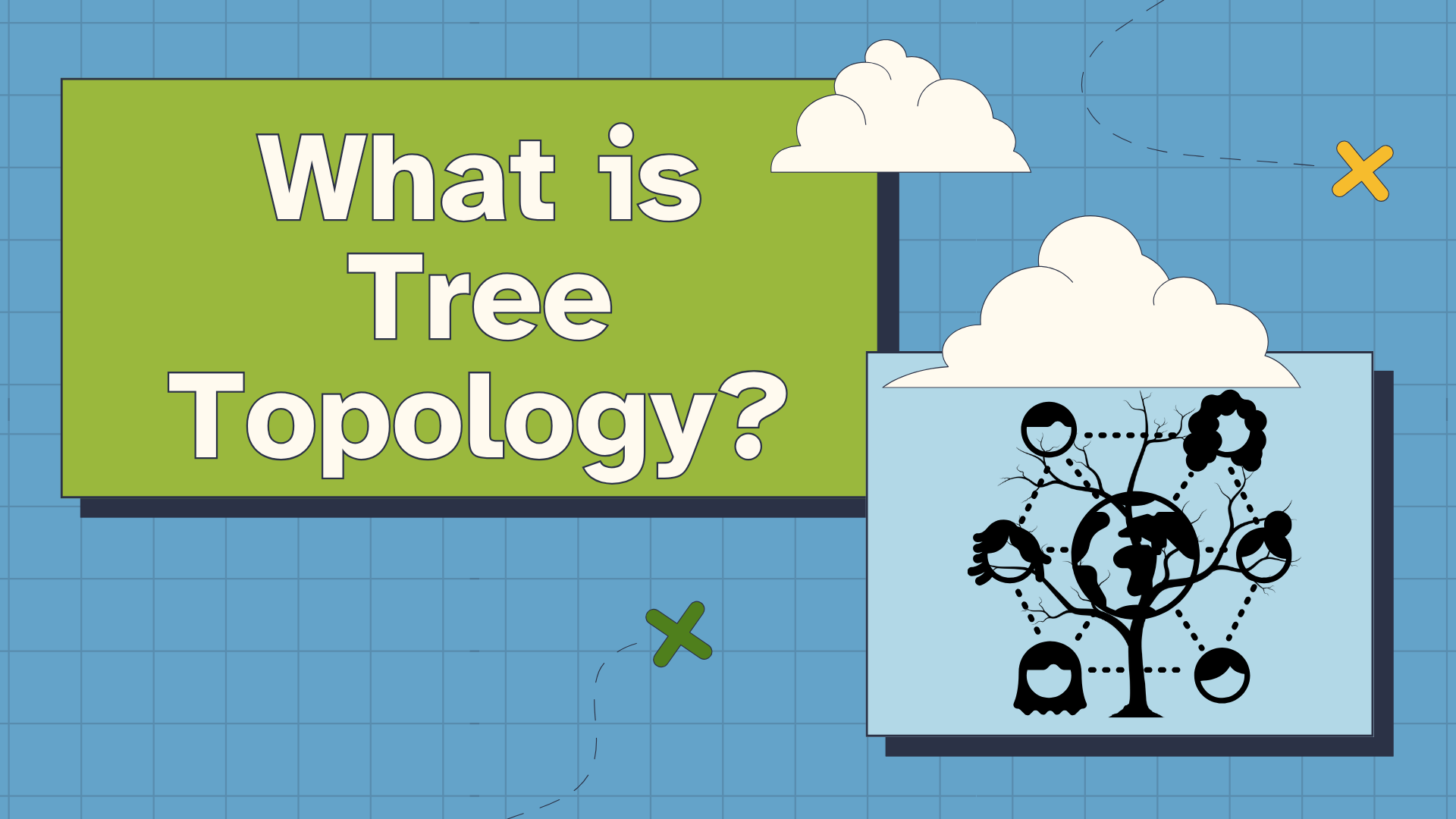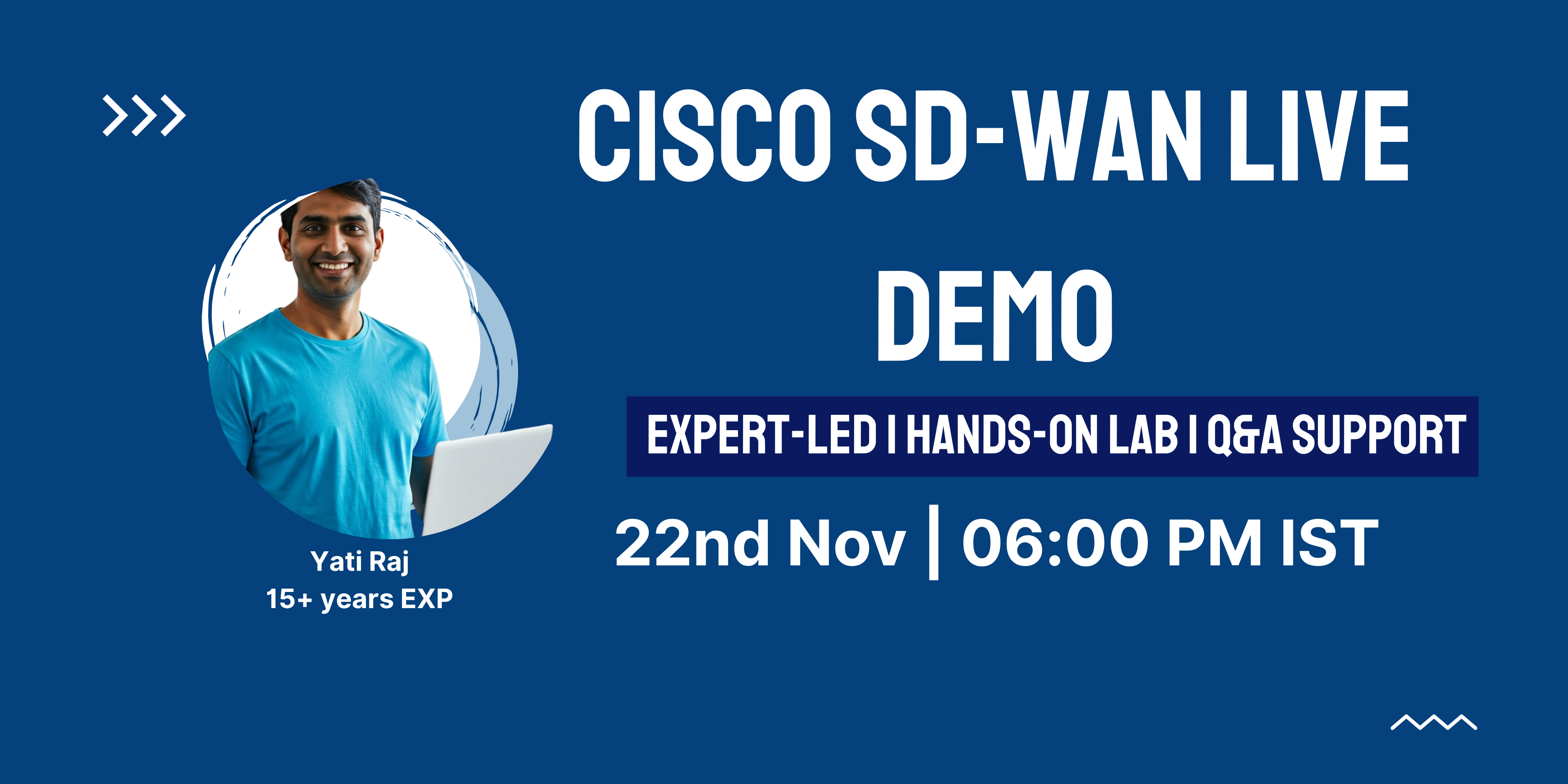
Point-to-point (P2P) topology is one of the most basic device arrangements in a computer network. A Point-to-point network creates a direct communication path between precisely two devices.
In this article, we’ll explore the point-to-point topology definition, its working, real-world applications, advantages, disadvantages, security considerations, and comparisons with other topologies to see where it stands in networking.
What is Point-to-Point (P2P) Topology?
Point-to-point topology is a network arrangement where a single communication link exists between two network nodes or devices without any interference.
Since there is only one communication channel needed for this setup, point-to-point topology is among the cheapest and easiest network topologies.
In addition, this topology minimizes the chance of congestion and offers a more dependable connection by holding all connections' capacity for communication. It is mostly used in Wide Area Networks (WANs), leased lines, and direct router-to-router links.
Point-to-Point Topology Diagram

As you can see in the diagram, there is a single communication line directly connecting two devices, enabling data to move straight between them without going via middlemen.
The communication line can be made with a wireless connection (such as radio links or microwaves) or a physical cable (such as copper or fiber optic).

Example of Point-to-Point Topology
A leased line connection between two offices in different cities is a perfect example of a point-to-point topology.
For instance, consider a company that has its headquarters in Mumbai and a branch office in Delhi. To ensure fast, secure, and dedicated communication between these two locations, the company sets up a dedicated fiber-optic leased line. This line directly connects the routers at both offices without involving any intermediate devices like switches or hubs.
Some other examples include:
● File sharing via Bluetooth
● Fax machines sending Fax
● A direct Ethernet cable between two computers.
Characteristics of Point-to-Point Topology
Here are some distinctive features of Point-to-point topology:
1. It involves a single, dedicated link between two devices, ensuring fast and secure communication.
2. It is easy to set up and manage, with minimal configuration and hardware requirements.
3. There is no bandwidth sharing, resulting in low latency and high reliability.
4. Commonly uses Point-to-Point Protocol (PPP) at the data link layer to transmit multiprotocol data.
5. Data is encapsulated into frames for error detection and reliable delivery.
How Data Travels in Point-to-Point Topology?
Point-to-Point topology establishes a direct line of communication between two devices, like switches, routers, or PCs. This dedicated connection guarantees that all data moves from one node to the other via a single, exclusive path.
Only the other linked device can receive data sent by one device since it is sent straight over the channel. There is no competition, no collision, and no transmission delay because no other nodes share the medium. As a result, communication is quick, effective, and safe.
Reliability and privacy are ensured by the link being used exclusively by the two communication nodes, regardless of the media.
Point-to-Point Topology Advantages and Disadvantages
Let's look at the benefits and drawbacks of a P2P network.
Advantages of Point-to-Point Topology
The main advantages are:
● Easy to design, implement, and maintain.
● Since only two nodes communicate, transmission speed is maximized.
● No intermediate hops, ensuring faster data delivery.
● Fewer points of vulnerability compared to shared topologies.
● The entire bandwidth of the link is dedicated to two devices.
● Fewer chances of collisions or traffic congestion.
Disadvantages of Point-to-Point Topology
The primary disadvantages are:
● Suitable only for two nodes. Expanding the network requires multiple links.
● Establishing separate connections between multiple devices is expensive.
● If the link goes down, communication is disrupted completely.
● Dedicated links may remain idle if not constantly used.
● For an organization with hundreds of devices, managing individual links is impractical.
How Point-to-Point Topology Ensures High Security?
Point-to-point topology gives two devices a dedicated communication channel, which improves security. Eavesdropping and data interception are significantly reduced because the link is private and not shared with other nodes.
To maintain confidentiality, the transmission medium is only accessible by the two linked devices. Furthermore, in contrast to star or mesh networks, this architecture does not depend on any intermediary devices like switches or hubs.
Direct communication is extremely safe since there is no chance of infiltration, data tampering, or unwanted access because third-party devices are removed from the communication chain.
Point-to-Point Topology vs. Other Topologies
The point-to-point (P2P) topology offers two nodes a straightforward, dedicated connection. This is very different from other topologies like Bus, Star, and Mesh, which are made to link various devices. To know P2P's optimal networking placement, we will compare it to other widely used topologies.
Point-to-Point vs Bus Topology
| Aspect | Point-to-Point (P2P) | Bus Topology |
| Connection | Direct, dedicated link between two nodes only. | All devices share a single backbone cable. |
| Security | Very secure since only two nodes use the link. | Less secure as data travels across a shared medium. |
| Performance | High speed, no collisions. | Prone to collisions, performance decreases with more devices. |
| Scalability | Not scalable beyond two devices. | Supports many devices on one cable, but has limited growth. |
Point-to-Point vs Star Topology
| Aspect | Point-to-Point (P2P) | Star Topology |
| Connection | Only two devices are directly connected. | Multiple devices connect through a central hub or switch. |
| Security | Highly secure, no third-party involvement. | Less secure, as the hub/switch may become a weak point. |
| Performance | Very fast due to the direct link. | High, but depends on hub/switch performance. |
| Scalability | Very limited (only two devices). | Highly scalable, easy to add or remove devices. |
Point-to-Point vs Mesh Topology
| Aspect | Point-to-Point (P2P) | Mesh Topology |
| Connection | Simple design, just one dedicated link. | Complex, every device is connected to all other devices. |
| Security | Secure due to private link. | Extremely secure with multiple redundant paths. |
| Performance | High, but only between two nodes. | Very high, as traffic can take alternate paths. |
| Scalability | Not scalable beyond two devices. | Scales well but costly due to large number of links. |
Real-World Applications of Point-to-Point Topology
Point-to-point topology is widely used in both traditional and modern systems:
1. Dedicated Office Connectivity
Many enterprises use point-to-point leased lines to link their headquarters with regional offices. This provides a private, high-speed channel for file transfers, real-time collaboration tools, and video meetings without depending on the public internet.
2. Data Center Linking
Cloud providers and IT companies often connect their data centers through direct fiber links. These point-to-point channels help in rapid data replication, disaster recovery, and high-availability services across multiple locations.
3. Wireless Tower Backhaul
Telecom operators commonly deploy point-to-point microwave or radio links between cell towers and the central network. This is especially useful in rural or difficult terrains where laying physical cables is costly or impractical.
4. Satellite Ground Stations
In satellite systems, a ground station communicates directly with a satellite in orbit via a point-to-point link. This enables GPS tracking, satellite TV broadcasting, weather monitoring, and global internet coverage.
5. Device-to-Device Connections
Point-to-point is also present in daily life. Examples include a computer connected to a printer through USB or a laptop directly linked to a projector. These connections are simple, exclusive, and efficient.
Conclusion
Point-to-point topology may be the simplest networking arrangement, but it remains one of the most reliable, secure, and efficient methods of communication. While its scalability is limited, it continues to play a vital role in specialized applications where direct communication is necessary. Whether it’s in telecommunications, enterprise networks, or wireless systems, the principle of connecting two nodes directly is timeless and essential in networking.
He is a senior solution network architect and currently working with one of the largest financial company. He has an impressive academic and training background. He has completed his B.Tech and MBA, which makes him both technically and managerial proficient. He has also completed more than 450 online and offline training courses, both in India and ...
More... | Author`s Bog | Book a MeetingFAQ
Comments (0)
Popular posts


Different Types of Network Topologies ...
10 Nov 2025
CCNA Exam Fees and Expenses Breakdown
25 Aug 2025
New Cisco CCNA Syllabus for 2025
8 Nov 2025
What is a Cloud Service Provider and Top ...
7 Nov 2025Recent posts

What are the AWS Specialty ...
25 Nov 2025
What are the Best Cloud Computing ...
25 Nov 2025
What is Network Time Protocol and Where ...
21 Nov 2025
What Are the Best CI/CD Tools in 2025? ...
17 Nov 2025.png)
How to Configure WAN Cloud Components - ...
14 Nov 2025Upcoming batches
Contact learning advisor









